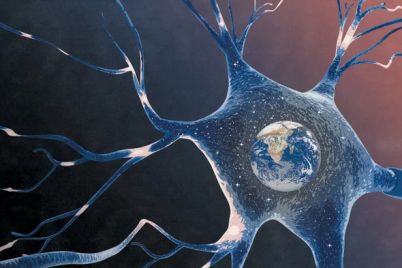
Eleven days after being bitten by one of her pet prairie dogs, a 3-year-old girl in Wisconsin on 24 May 2003 became the first person outside of Africa to be diagnosed with monkeypox. Two months later, her parents and 69 other people in the United States had suspected or confirmed cases of this disease, which is caused by a relative of the much deadlier smallpox virus. The monkeypox virus is endemic in parts of Africa, and rodents imported from Ghana had apparently infected captive prairie dogs, North American animals, when an animal distributor in Texas housed them together.
The outbreak now underway has affected more people outside of Africa than ever before—nearly 1300 cases as of 7 June, on multiple continents, many of them men who have sex with men. But like the 2003 episode, today’s surge has raised a possibility that makes researchers gulp: Monkeypox virus could take up permanent residence in wildlife outside of Africa, forming a reservoir that could lead to repeated human outbreaks.
No animal reservoir currently exists outside of Africa, but the U.S. outbreak of 2003 was a close call, some scientists suspect, especially because nearly 300 of the animals from Ghana and the exposed prairie dogs were never found. “We narrowly escaped having monkeypox establish itself in a wild animal population” in North America, suggests Anne Rimoin, an epidemiologist at the University of California, Los Angeles, who long has studied the disease in the Democratic Republic of the Congo (DRC). In the end, however, surveys of wild animals in Wisconsin and Illinois never found monkeypox virus, none of the infected humans passed on the disease to other people, and worries about this exotic outbreak evaporated.
Will North and South America, Europe, Asia, and Australia—all of which have reported monkeypox cases in this outbreak—be similarly fortunate this time?
Viruses frequently pingpong between humans and other species. Although COVID-19 is widely thought to have resulted from SARS-CoV-2 jumping from a bat or other host into people, humans have, in “reverse zoonoses,” also infected white-tailed deer, minks, cats, and dogs with the virus. One study in Ohio found antibodies to SARS-CoV-2 in more than one-third of 360 wild deer sampled. And in past centuries, when humans carried plague and yellow fever to new continents, those pathogens created reservoirs in rodents and monkeys, respectively—which later infected humans again.
As this outbreak of monkeypox expands, the virus has an unprecedented opportunity to establish itself in non-African species, which could infect humans and provide greater opportunity for more dangerous variants to evolve. “Monkeypox reservoirs in wild animals outside of Africa is a scary scenario,” says Bertram Jacobs, a virologist at Arizona State University (ASU), Tempe, who studies vaccinia, the poxvirus that served as the smallpox vaccine and helped eradicate that devastating virus from humans.
Public health officials in several countries have advised people who have monkeypox lesions to avoid contact with their pets until they heal. Some 80% of the cases have occurred in Europe, and the European Food Safety Authority said no pets or wild animals had been infected as of 24 May. But it added that “close collaboration between human and veterinary public health authorities is needed to manage exposed pets and prevent the disease from being transmitted to wildlife.”
The possibility that humans infected with monkeypox virus will spread it to wildlife outside of Africa “warrants serious concern,” says William Karesh, a veterinarian at the EcoHealth Alliance who last week spoke about this possibility at a consultation on monkeypox research organized by the World Health Organization. For now, he says, the limited number of human cases reduces the odds. But pet rodents are a particular worry, as is the sheer number of wild ones—they make up 40% of all mammals—that frequently raid trash and could become infected by contaminated waste. “That’s a lot of opportunity,” he says.
Studies have yet to pinpoint the African reservoir of the monkeypox virus. Although a lab in Copenhagen, Denmark, in 1958 first identified it in research monkeys from Asia, scientists now believe the primates caught it from an African source. All human cases since the first one was reported in 1970, in the DRC (then Zaire), could be tied to the virus spilling over from animals in Africa.
So far, however, only six wild animals trapped in Africa have yielded the virus: three rope squirrels, a Gambian rat, a shrew, and a sooty mangabey monkey. Antibodies to the monkeypox virus are most abundant in African squirrels. “We still poorly understand the current reservoir other than it’s rodents,” says Grant McFadden, a poxvirus researcher who is also based at ASU.
But it’s clear that monkeypox can infect many other kinds of animals in the wild and captivity. A 1964 outbreak in a Rotterdam, Netherlands, zoo sickened giant anteaters, orangutans, gorillas, chimpanzees, a gibbon, and a marmoset. Researchers have intentionally infected many lab animals, including rabbits, hamsters, guinea pigs, and chickens, although the virus doesn’t reliably cause disease in several of them.
For many viruses, a lock-and-key relationship between viral surface proteins and receptors on host cells determines which animals it can infect; the spike protein of SARS-CoV-2, for example, latches onto angiotensin-converting enzyme 2, a protein that studs a variety of cells in humans, minks, cats, and many other species. But poxviruses don’t seem to require specific host receptors, enabling many to infect a wide range of mammalian cells. Vaccinia, the smallpox vaccine virus, can even infect fruit flies in addition to cows and people, notes David Evans, a poxvirus researcher at the University of Alberta, Edmonton. Bernard Moss, a virologist at the U.S. National Institute of Allergy and Infectious Diseases (NIAID), has posited that some poxviruses have proteins on their surfaces that form a “hydrophobic face,” a water-repelling area that can bind nonspecifically to hydrophilic cell membranes and initiate the infection process.
But whether a poxvirus can copy itself and, ultimately, persist in a species to create a reservoir depends on how well it fends off the host’s immune attacks. Poxviruses have a relatively large complement of genes, about 200, and roughly half undermine a host’s immune response. “Some viruses run and hide or are stealthy, avoiding direct contact with elements of the immune system,” McFadden says. “Poxviruses by and large stand up and fight.”
Their defense against host immunity appears to rely heavily on a family of genes scattered around their genomes that code for poorly understood proteins containing domains known as ankyrin repeats. Poxvirus proteins containing these repeats act as “molecular flypaper,” Evans says, glomming onto host proteins involved with coordinating the immune response. “Orthopoxviruses have these arrays of ankyrin repeats, and most of them, we don’t really know what they target,” Evans says. “But the bottom line is those probably hold the key to trying to understand why it is some of these viruses have the host range that they do.”
Variola, the smallpox virus, appears to have lost many of these immune-evasion genes. It only persists in humans and has no animal reservoir, which was why the global vaccination campaign could eradicate it. Monkeypox is clearly more promiscuous. But the many questions that remain about it means there’s no telling whether it will create reservoirs in non-African wildlife. “One of the challenges has been a lack of interest,” says Lisa Hensley, a microbiologist at the U.S. Department of Agriculture who began doing monkeypox research in 2001 as part of a U.S. Army lab.
Hensley, who worked on monkeypox at NIAID for nearly a decade and collaborated with Rimoin, urges people to keep an open mind about how the virus behaves and what it might do next. “We’re recognizing that this is a disease we need to worry about and that we really don’t know as much as we think we know.”




